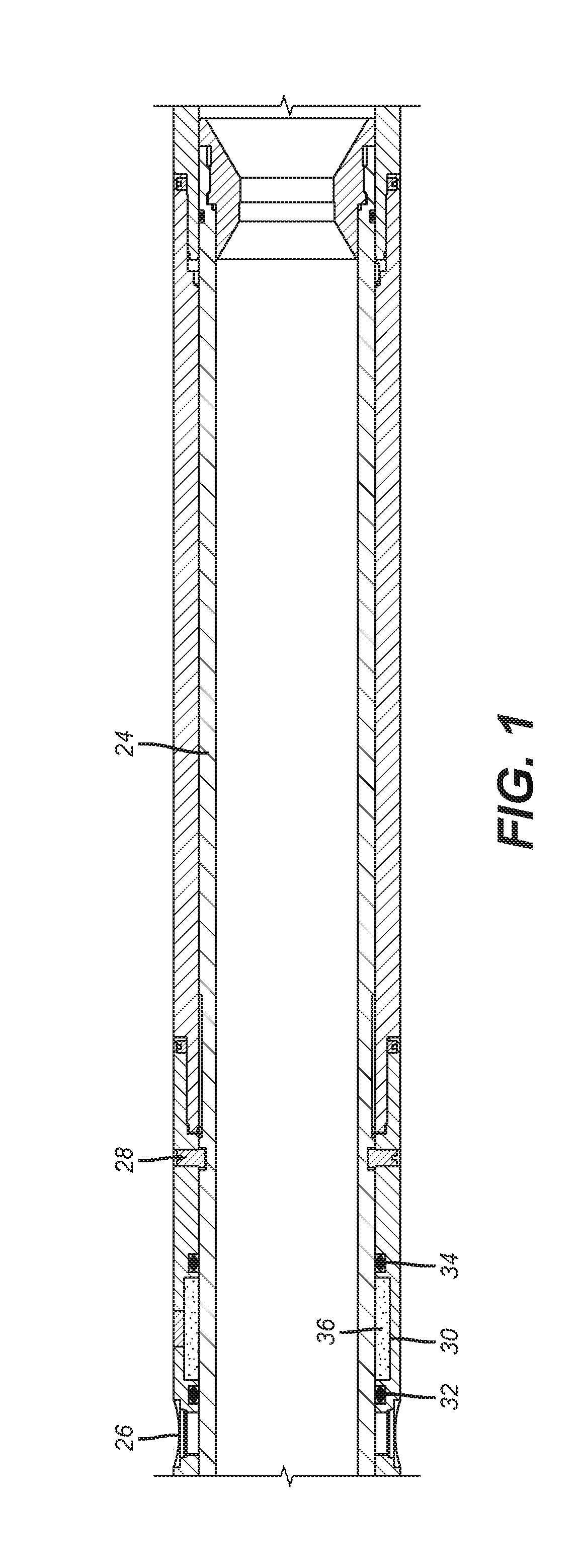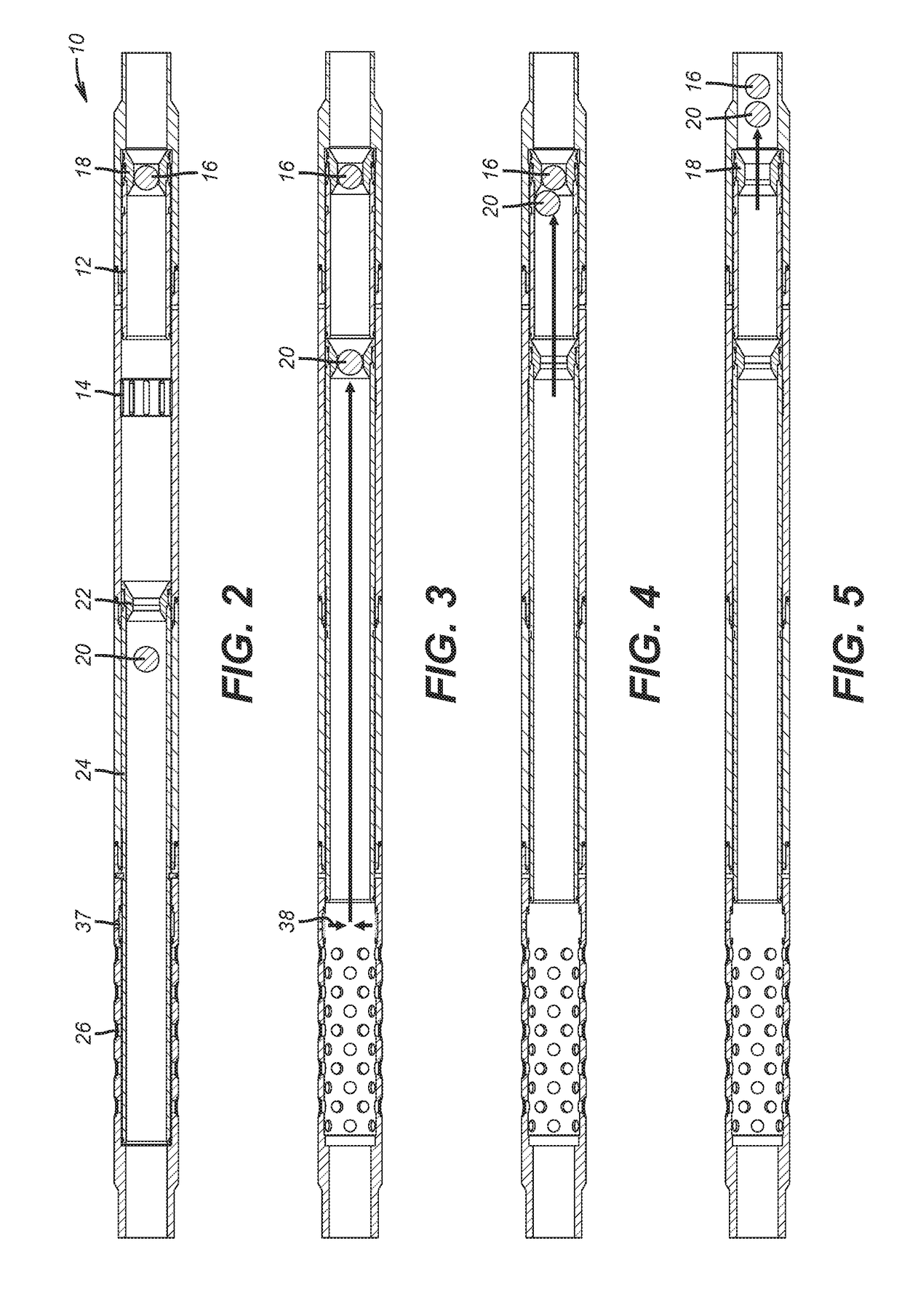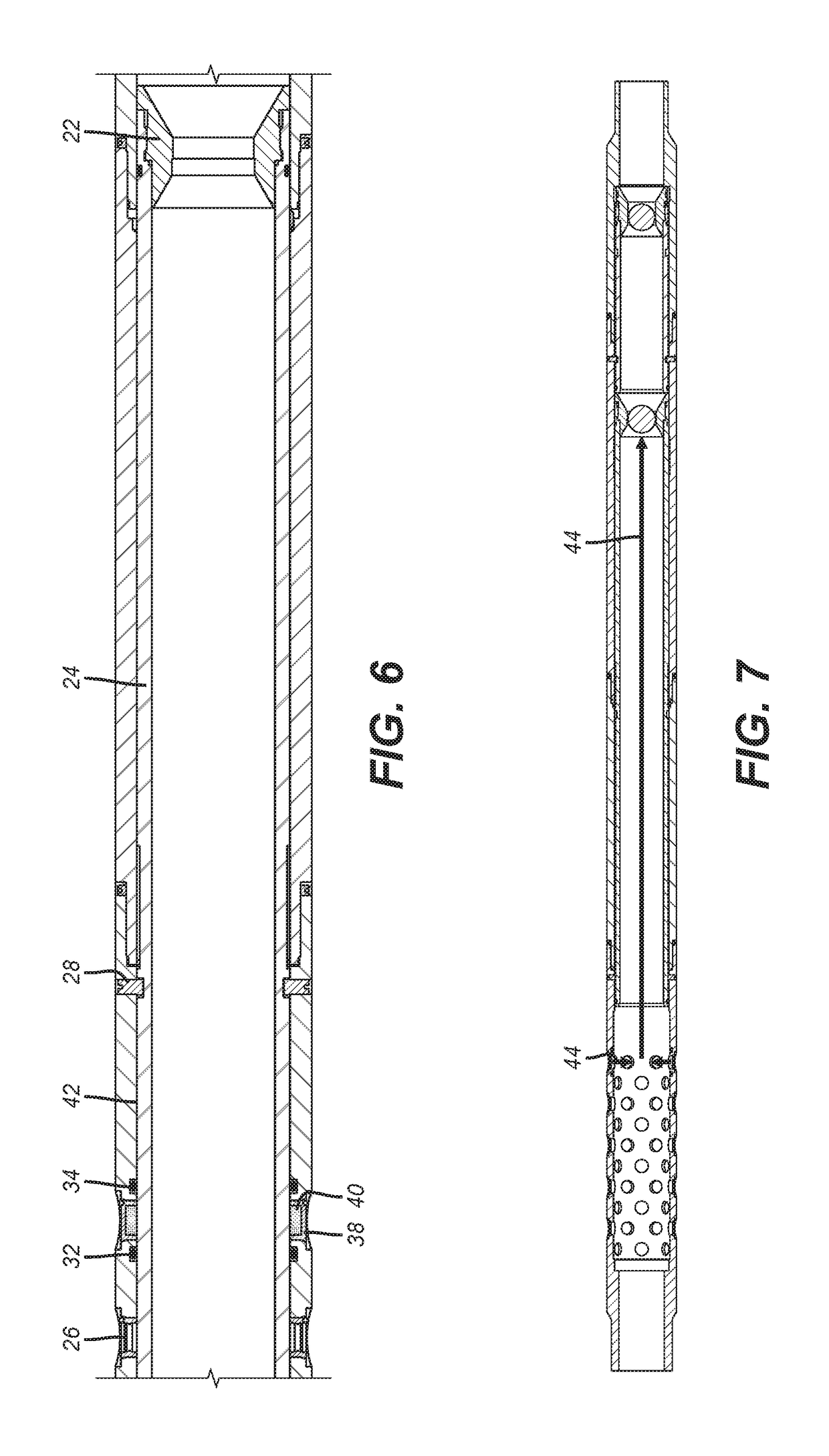Sliding Sleeve Valve with Degradable Component Responsive to Material Released with Operation of the Sliding Sleeve
a sliding sleeve valve and degradable technology, applied in the direction of fluid removal, borehole/well accessories, construction, etc., can solve the problems of not always possible, difficult to pump salt or acid solution downhole to reach the degradable material, and relatively slow method
- Summary
- Abstract
- Description
- Claims
- Application Information
AI Technical Summary
Benefits of technology
Problems solved by technology
Method used
Image
Examples
Embodiment Construction
[0021]Referring to FIG. 2 a ported sleeve assembly 10 being one of many that are used in a treatment and which are axially spaced to treat isolated portions of an interval using annulus packers (not shown) is illustrated. It has a lower sleeve 12 that initially closes treatment ports 14 until an object such as a ball 16 is landed on seat 18 and pressure is applied to move sleeve 12 into the FIG. 2 position. After the treatment is completed another object such as ball 20 is delivered to seat 22 such that pressure applied on seated ball 20 shifts the upper sleeve 24 to open screened production ports 26. Referring to FIG. 1, sleeve 24 is initially pinned with shear pin or pins 28 which break when sleeve 24 is moved with pressure on ball 20 when seated on seat 22. Annular chamber 30 is formed between seals 32 and 34 sealing against sleeve 24 until sleeve 24 is shifted with pressure to move past at least seal 32 to allow the material or disintegrating agent 36 that will initiate disinteg...
PUM
 Login to View More
Login to View More Abstract
Description
Claims
Application Information
 Login to View More
Login to View More - R&D
- Intellectual Property
- Life Sciences
- Materials
- Tech Scout
- Unparalleled Data Quality
- Higher Quality Content
- 60% Fewer Hallucinations
Browse by: Latest US Patents, China's latest patents, Technical Efficacy Thesaurus, Application Domain, Technology Topic, Popular Technical Reports.
© 2025 PatSnap. All rights reserved.Legal|Privacy policy|Modern Slavery Act Transparency Statement|Sitemap|About US| Contact US: help@patsnap.com



